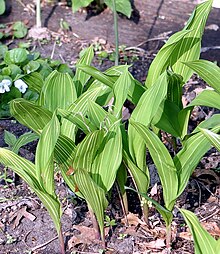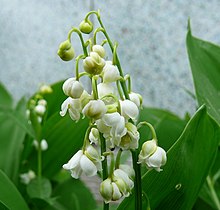Around since at least 1000 B.C., lily of the valley plants are one of the most fragrant blooming plants in the spring and early summer throughout the northern temperate zone. The stems are covered with tiny white, nodding bell-shaped flowers that have a sweet perfume and medium-bright green leaves that are lance-shaped, 4 to 8 inches high and 3 to 5 inches wide.
This moisture loving plant forms a spreading mass with red seed pods remaining after flowering, which makes lily of the valley attractive after blooming and very carefree. Growing lily of the valley plants (Convallaria majalis) is easy, as they will remain perennial in USDA Zones 2-9. Growing Lily of the Valley This easy-care plant doesn’t require much to thrive. Preferring partial shade and a moist soil, growing lily of the valley is easy if you know how and when to plant. That being said, these plants are adaptable and will grow very well in dry shade too.
Lily of the valley can also be adapted to full sun or full shade, depending on the amount of moisture it receives. When purchasing plants, look for the following cultivars: Convallaria majalis ‘Albostriata’ – This type has dark leaves with white to cream longitudinal stripes. ‘Aureomarginata’ – This variety has cream to yellow edged leaves. Rosea – A pink variety, not as vigorous as the white flowered species but very pretty. Convallaria majuscule ‘Greene’ – This North American native is great for naturalistic ground cover and provides a carpet of beauty between other native plants. When to Plant Lily of the Valley Knowing when to plant lily of the valley will help to ensure its survival in your garden. Planting lily of the valley should take place by late fall. Cool winter temperatures are required to allow a proper dormancy period. The single underground rhizomes of this plant, which are known as “pips”, can be divided anytime after flowering. November or December would be the ideal time for division and planting lily of the valley. Care should be taken when planting as it is a poisonous plant, so keep it away from children and pets. Try planting lily of the valley plants in a naturalistic garden. Planting lily of the valley in outdoor containers would also be a great way to control its spread and provide it with the moisture it enjoys. No matter what method you choose for growing lily of the valley, you will find that lily of the valley care is easy and worth the rewards.
Read more at Gardening Know How: Growing Lily Of the Valley: When To Plant Lily Of The Valley https://www.gardeningknowhow.com/ornamental/bulbs/lily-of-the-valley/growing-lily-of-the-valley.htm






















